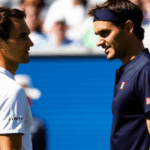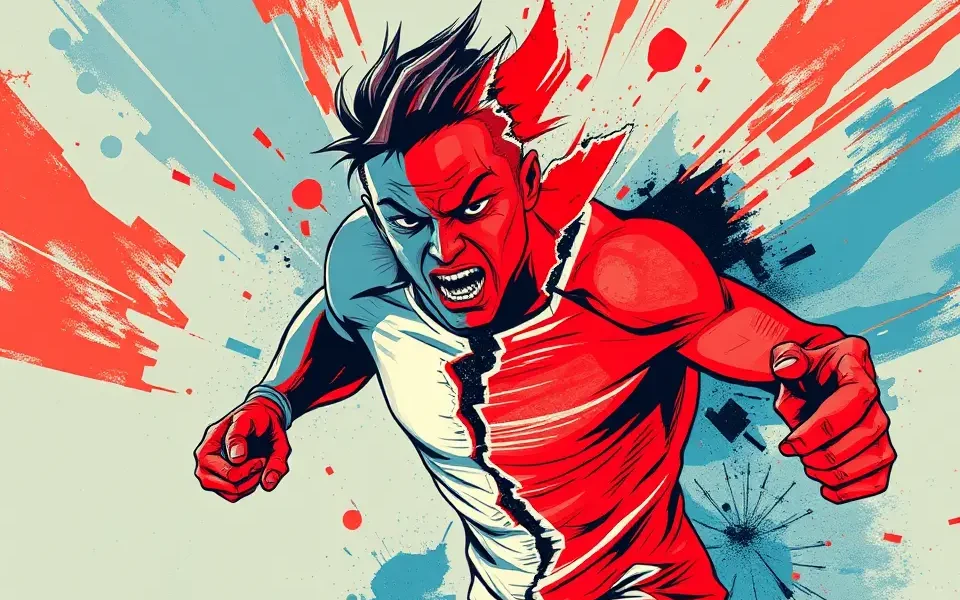Carlos Alcaraz, the electrifying young Spaniard, has taken the tennis world by storm with his explosive game and infectious enthusiasm. However, even the brightest stars have their vulnerabilities. According to former world No. 1 Andy Roddick, Alcaraz’s greatest strength – his aggressive style of play – can sometimes be his biggest weakness.
The Roddick Analysis: A Superpower with a Downside
Andy Roddick, known for his insightful commentary, recently analyzed Alcaraz’s game on his “Served” podcast. He acknowledged Alcaraz’s incredible talent and captivating style, stating that the Spaniard is his favorite player to watch. However, Roddick also pointed out a key area where Alcaraz could improve: his tendency to become more aggressive when facing adversity.
“When he’s struggling or uncomfortable, he just ramps up the aggression,” Roddick explained. “That’s challenging because the greatest players in history usually adjust by playing with more margin. Then, when they get into a rhythm, they take more risks without being reckless. Right now, when Carlos isn’t at his best, he almost pushes harder instead of settling into the match.”
Dictating Play: Alcaraz’s Natural Instinct
Roddick emphasized that Alcaraz’s natural inclination is to dictate play and control the match. He described this ability as Alcaraz’s “superpower.” This aggressive mindset has undoubtedly contributed to his success, allowing him to dominate opponents and win crucial points.
However, Roddick cautioned that relying solely on this instinct can be a liability. “He likes to be the one that dictates, and that’s his superpower, and sometimes our superpowers can also be weaknesses when not used in the right moment,” Roddick stated.
The Need for a “Plan B”
Roddick suggests that Alcaraz needs to develop a “Plan B” for moments when his aggressive game isn’t firing on all cylinders. Instead of simply trying to hit the ball harder or take more risks, he should learn to adjust his approach and play with more patience and margin.
“What I almost want is for Carlos to step onto the court and tell himself that for the first six games, the goal is to ‘take the legs away’ from the opponent,” Roddick said. “To show that his ball is heavier than the opponent’s. To force the opponent to hit winners for six games. I don’t think Carlos enjoys watching his opponents hit winners.”
This more measured approach would involve:
- Heavier ball: Focus on hitting a heavier ball with more spin, making it difficult for opponents to attack.
- Consistent depth: Aim for consistent depth on his shots, pushing opponents behind the baseline and limiting their opportunities to dictate play.
- Forcing errors: Force opponents to hit winners, rather than trying to win points outright with high-risk shots.
By implementing this strategy, Alcaraz can weather difficult periods in a match and gradually build momentum, ultimately creating more opportunities to unleash his aggressive game.
Alcaraz Acknowledges the Need for Strategy
Interestingly, Alcaraz himself has recognized the potential pitfalls of relying too heavily on instinct. In a recent press event, he admitted that he sometimes struggles to maintain his intensity throughout an entire match.
“Sometimes it has happened to me that when I’m winning a match, and I’m feeling good, I lower the intensity and end up losing,” Alcaraz said. “I’ve learned a lot from that.”
He also acknowledged the importance of strategy, stating, “I think that many times I play by instinct in the important moments. I do what I feel, and that’s not good. Maybe you have to follow a strategy.”
This self-awareness is a positive sign, indicating that Alcaraz is committed to refining his game and addressing his weaknesses.
Examples of Alcaraz’s Inconsistency
Roddick’s analysis came on the heels of Alcaraz’s surprising early exit from the 2025 Miami Open, where he suffered a first-round defeat to veteran David Goffin. This loss highlighted the inconsistency that Roddick alluded to.
Prior to Miami, Alcaraz had shown strong form at the BNP Paribas Open in Indian Wells, reaching the semi-finals before losing to eventual champion Jack Draper. While a semi-final result is nothing to scoff at, it was still a step down from his previous two title runs at the event.
2024: A Year of Highs and Lows
Looking back at Alcaraz’s 2024 season, it’s clear that inconsistency has been a recurring theme. While he captured two Grand Slam titles (Wimbledon and the French Open), he also experienced some unexpected losses and periods of uneven play.
As one source notes, “The conclusion that can be drawn from his last season is that he was inconsistent throughout the year.”
2025 Season: A Mixed Bag
The 2025 season has been a similar story. Alcaraz won the ABN Emerald Open in Rotterdam, but he has also suffered some disappointing results, including a quarterfinal loss at the Australian Open to Novak Djokovic and the aforementioned first-round exit in Miami.
According to one analyst, “The fact of the matter is that Alcaraz has demonstrated such a high level of tennis throughout his young career that the few downs of his game are more than enough to start doubting his form.”
The Importance of Adaptability
The ability to adapt and adjust is a hallmark of the greatest tennis players. Roger Federer, often regarded as one of the most cerebral players of all time, was known for his tactical flexibility and his ability to find solutions in challenging situations.
Alcaraz has been described as a blend of the “Big Three” (Federer, Nadal, and Djokovic), possessing elements of their games. However, as one article suggests, “However, he could perhaps do with taking more inspiration from the oldest among that trio, Federer, whose game was arguably the most cerebral of the bunch.”
By emulating Federer’s adaptability and developing a greater understanding of strategy, Alcaraz can elevate his game to new heights.
Addressing Other Potential Weaknesses
While Roddick focused on Alcaraz’s tendency to become overly aggressive, other analysts have pointed out additional areas where he could improve.
Second Serve
One common observation is that Alcaraz’s second serve can be vulnerable. As one source notes, “But Alcaraz couldn’t get anything going behind his second serve, winning only 33% of the points, well below the 58% of Djokovic.”
By mixing up his second serve placement and adding more spin and variety, Alcaraz can make it more difficult for opponents to attack.
Return Errors
Another area of concern is Alcaraz’s return of serve, particularly his forehand return. According to one analysis, “On the other hand, his return of serve has recently started bleeding errors – particularly his forehand return… Alcaraz’s forehand return is the weakest out of all nine tournaments in Toronto (34.6% won) and Cincinnati (38.4% won).”
By improving his footwork and making better decisions on his return, Alcaraz can reduce his error count and create more opportunities to put pressure on his opponents’ serves.
Consistency and Focus
Several sources mention Alcaraz’s need to improve his consistency and focus throughout an entire match. As one article states, “Alcaraz’s ability to dominate a set and then suddenly lose control in the next has been a recurring issue in his young career.”
By developing better mental strategies and maintaining a high level of concentration, Alcaraz can avoid lapses in his game and sustain his intensity from start to finish.
Conclusion: The Path to Domination
Carlos Alcaraz is undoubtedly one of the most exciting and talented players in tennis today. His aggressive style, incredible athleticism, and infectious personality have made him a fan favorite around the world.
However, as Andy Roddick has pointed out, Alcaraz’s greatest strength can also be a weakness. By learning to temper his aggression with patience and strategy, and by addressing other potential weaknesses in his game, Alcaraz can unlock his full potential and achieve sustained dominance in the years to come. The tennis world eagerly awaits to see how he evolves and continues his journey towards greatness.








No Comment! Be the first one.